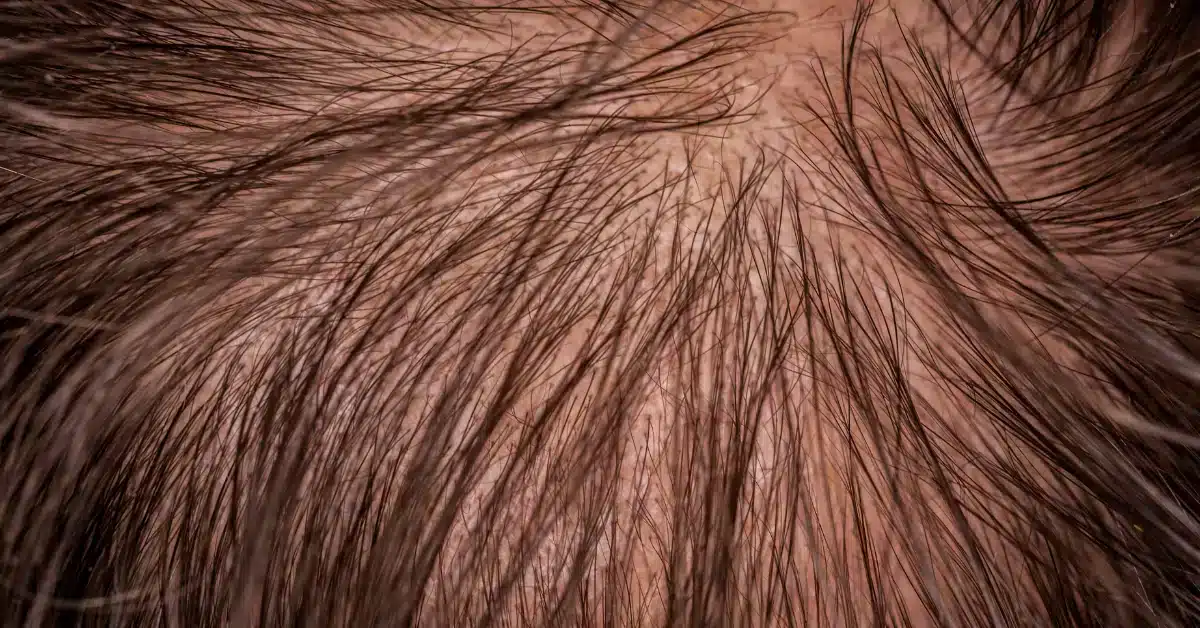Ophiasis Alopecia: A Detailed Guide
Alopecia Areata (AA) is an autoimmune disease. It is caused by T cells and destroys hair follicles.
Ophiasis is a subtype of AA that causes hair loss. It’s in a band-like pattern in the scalp’s occipital, temporal, and parietal areas.
Ophiasis Alopecia is a type of Alopecia Areata caused by the immune system.
This condition is marked by hair loss that looks like a snake and usually happens at the back of your head.
Some people’s hair loss can also be seen on the sides of the scalp.
Read the article below to understand the causes and symptoms of Ophiasis Alopecia.
Relation between Ophiasis Alopecia & Alopecia Areata
Ophiasis Alopecia is a type of severe Alopecia Areata that is very rare.
Most of the time, hair follicles are safe from immune responses like inflammation.
But in cases of Alopecia Areata and other hair loss caused by the immune system, follicles are thought to lose their immunity and become open for damage.
Dr. Madathupalayam Madhankumar, a medical doctor and surgeon, said, “Alopecia Areata is a chronic inflammatory disease that affects hair follicles and causes hair loss on the scalp that doesn’t leave scars.”
Ophiasis Alopecia symptoms
Hair loss tends to be the only symptom of Alopecia Areata, including the Ophiasis subtype.
Some people complain about itchiness, tingling, or a burning sensation preceding hair loss.
Changes in a person’s fingers and toenails might also indicate AA. On average, 30% of people face nail pitting, ridges, or other nail changes during Alopecia Areata.
Early signs of Ophiasis Alopecia might include:
- Brittle fingernails and toenails
- Hair loss in cold weather
- Hair thinning at the back and bottom of the scalp
Early detection of AA helps start the treatment leading to the best hair loss management.
Causes of Ophiasis Alopecia
The primary cause of Ophiasis Alopecia is the malfunctioning of the immune system. The following are the causes that lead to the same.
Genes

Areata is an autoimmune disorder that generally runs in families, says a study by Simkaou, Butcher, et al.
It is a polygenic disease caused due to interactions of more than one gene.
Genetic perspectives of Areata are studied by Biran et al.
The study stated that genes responsible for Areata belong to the Human Leukocytes Antigens (HLAs) family.
The HLA complex works to help the immune system distinguish the bodies from proteins made by foreign bodies.
Each gene of the complex has several variations.
This allows the immune system to react to various foreign proteins.
Some of these HLA genes are responsible for the immune system’s attack on the hair follicles.
Besides HLA, other genes are also involved in inflammation and have been associated with Alopecia Areata.
Autoimmune disorders
Autoimmune diseases are when the body’s immune system can’t differentiate between its cells and foreign invaders.
Doctors have suggested that there can be a possibility of Alopecia Areata to occur with other autoimmune disorders such as Thyroid or Type 1 Diabetes.
“Autoimmune conditions often travel in packs, so if you have one autoimmune disorder such as thyroid or diabetes, it is not uncommon to have others.”
says Brooke Jackson, MD, a board-certified dermatologist and dermatologic surgeon based in Durham, North Carolina
Studies have also shown similar results where Type 1 and Type 2 diabetic patients had an increased risk of Areata.
This disease may share some genetic risk factors.
Treatments
There are a few treatments that can be helpful while treating Ophiasis Alopecia.
Minoxidil
It is a popular drug you can buy without a prescription that helps hair grow back.
You can buy Tugain to help you with hair regrowth. It is easily available at WowRx.
The medicine is easy to use and comes in liquid, foam, and cream forms.
If you apply for the medicine on the affected areas, it might help hair grow back.
Corticosteroids
Another common drug used to treat alopecia is corticosteroids.
Their anti-inflammatory properties help stop inflammation caused by an immune system that isn’t working right.
Corticosteroids can be given as injections or as ointments on the skin.
Microneedling

When combined with red light therapy, micro-needling could help treat Ophiasis Alopecia.
Microneedles make small holes in the scalp as part of the method.
These constant, small holes may help the body produce more collagen and help hair grow back.
Conclusion
Ophiasis Alopecia is caused when the immune system attacks the hair follicles. It can be passed down from parent to child.
It is common in young people and can be hard to treat.
This illness takes a long to be fine again, so be patient and practice your measures.
Frequently Asked Questions
Is Ophiasis Alopecia curable?
There is no cure for Alopecia Areata, but it can be treated, and hair can grow back. In many cases, Alopecia is treated with medicines used for other conditions.
Does alopecia Ophiasis grow back?
This type of Alopecia Areata only happens sometimes. Hair loss occurs in a band around the head’s sides and back. With all kinds of Alopecia Areata, hair loss and regrowth can be random and happen in cycles. Some people may even get their hair back.
How common is Alopecia Ophiasis?
Alopecia Ophiasis is a subtype of Alopecia Areata. It is rare, but it is worth mentioning because of how it looks, where it is found, and how it will be treated.
What is the best treatment for Ophiasis alopecia?
If you have Ophiasis AA, micro-needling with Triamcinolone could be a good way to treat it. AA is an autoimmune disease caused by T cells and destroys hair follicles.
What is Ophiasis type alopecia?
Ophiasis is a type of Alopecia Areata that causes hair loss in a turban or snake-like pattern in a band-like area at the back of the head and on the sides.
WowRx uses only high-quality sources while writing our articles. Please read our content information policy to know more about how we keep our content reliable and trustworthy.






